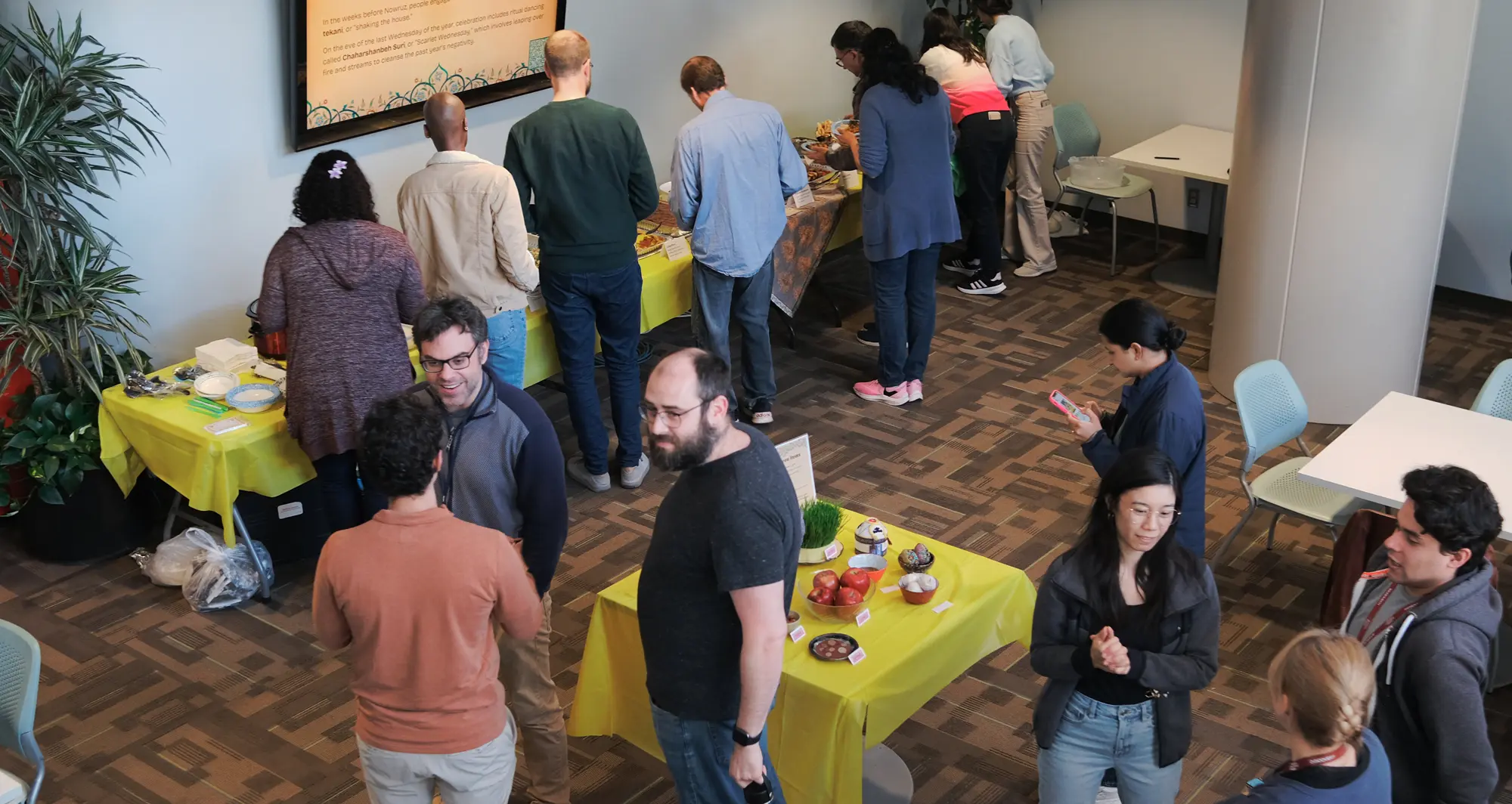Attendees at last week’s event welcomed the arrival of spring and learned about this holiday’s traditions and flavors
Just one day after the Northern Hemisphere’s vernal equinox, the institute held an event on Friday, March 21, 2025, in Chairmen’s Hall to raise awareness of an ancient and enduring celebration of spring called Nowruz, or Persian New Year.
The tradition began in the Persian Empire more than 3,000 years ago and continues today. With roots in one of the world’s oldest monotheistic religions, Nowruz started as a sacred Zoroastrian commemoration of life, the rebirth of nature and the triumph of light over darkness.
Nowruz — “new day” in Persian — has transformed over thousands of years into a set of secular customs practiced by many communities. Thanks to the efforts of a dozen members of the United Nations, Nowruz is recognized by UNESCO’s Intangible Cultural Heritage of Humanity effort to recognize and safeguard the invaluable role of cultural customs in bringing human beings closer together and ensuring exchange and understanding among them.
These traditions include a spring-cleaning ritual called khaneh tekani, or “shaking the house,” as well as a dancing event on the eve of the Wednesday prior to the equinox called Chaharshanbeh Suri or “Scarlet Wednesday.” Participants leap over fire and streams to cleanse themselves from the past year’s negativity.

Nowruz at Sanford Burnham Prebys included digital posters describing the celebration and its cultural practices. It also featured another notable tradition known as the Haft-Seen table, which includes items that symbolize different forms of hope for the new year. With “haft” meaning “seven” in Persian, there are seven foundational items that all start with the Persian letter ‘S’ or “seen.” These are:
- sabzeh (sprouted wheat, barley or lentils)
- samanu (sweet pudding made from wheat germ)
- senjed (dried oleaster fruit, also known as lotus tree fruit)
- seer (garlic)
- seeb (apples)
- serekh (vinegar)
- somagh (sumac, a spice that symbolizes the color of sunrise)

Nowruz attendees also enjoyed customary food and santoor music provided by Mehran Ghafari, PhD, a postdoctoral associate in the lab of Xiao Tian, PhD, an assistant professor in the Center for Neurologic Diseases at Sanford Burnham Prebys.
This event was a continuation of the Holidays Around the World series at Sanford Burnham Prebys. This series is planned by volunteers from labs and departments across campus, the Workforce Engagement and Belonging Council and the Office of Workplace Engagement and Belonging. The goal is to bring the Sanford Burnham Prebys community together to learn more about the many cultures represented within the institute’s faculty, staff and trainees.